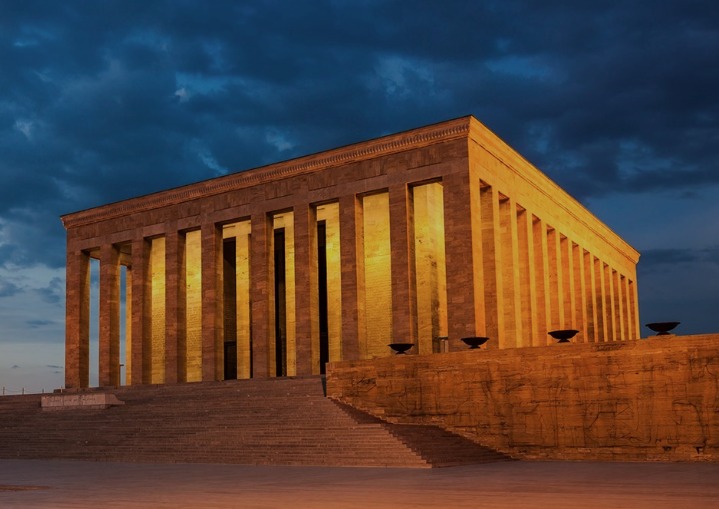Anıtkabir, the final resting place of Mustafa Kemal Atatürk, the founder of the Republic of Turkey, is more than just a mausoleum. It is a symbol of Turkish pride, history, and resilience. Located in the heart of Ankara, the nation’s capital, Anıtkabir offers visitors a profound experience of history, architecture, and national identity.
Getting There
Situated on Anıttepe Hill, Anıtkabir is easily accessible from various parts of Ankara. Public transport options such as buses and the metro provide convenient routes to the site. For those driving, ample parking facilities are available nearby. The entrance is free, making it an ideal destination for tourists and locals alike.
Architectural Marvel
Designed by architects Emin Onat and Ahmet Orhan Arda, Anıtkabir’s construction began in 1944 and was completed in 1953. The structure is a blend of modern and classical architectural styles, embodying simplicity and grandeur. The mausoleum is surrounded by vast gardens, pathways, and ceremonial grounds, reflecting the unity and diversity of Turkey.
The main hall, where Atatürk’s tomb is located, exudes a solemn atmosphere. The simplicity of the design emphasizes the profound respect for Atatürk’s legacy. Intricate mosaics, monumental columns, and marble elements further enhance the elegance of the structure.
Highlights of the Visit
-
The Road of Lions: This iconic walkway, lined with 24 lion statues symbolizing strength and vigilance, leads visitors to the main courtyard. The lions are inspired by Hittite art, reflecting Turkey’s ancient heritage.
-
The Ceremonial Plaza: A vast open area where official ceremonies are held, the plaza offers breathtaking views of Ankara. The geometric patterns on the ground are a testament to Turkish craftsmanship.
-
The Mausoleum: The centerpiece of Anıtkabir, the mausoleum houses Atatürk’s sarcophagus. Visitors often leave flowers and pay their respects here.
-
The Museum of Atatürk and the War of Independence: Located beneath the mausoleum, this museum provides a detailed account of Turkey’s struggle for independence. Exhibits include personal belongings of Atatürk, historical documents, and war memorabilia.
-
The Peace Park: Surrounding Anıtkabir, the Peace Park is a lush green area featuring trees and plants from all over the world. It symbolizes Atatürk’s vision of peace and unity.
Tips for Visitors
-
Best Time to Visit: Early mornings or late afternoons are ideal to avoid crowds and enjoy the tranquil atmosphere.
-
Respect the Atmosphere: Anıtkabir is a place of great national significance. Visitors are expected to maintain decorum and respect the solemnity of the site.
-
Photography: While photography is allowed, using drones or professional equipment might require special permissions.
Conclusion
A visit to Anıtkabir is not just a trip to a historical site; it is a journey into the soul of Turkey. The site’s blend of historical significance, architectural beauty, and cultural symbolism makes it a must-visit destination for anyone traveling to Ankara. Standing in the presence of Atatürk’s legacy, visitors leave with a deeper understanding of Turkey’s past and its enduring spirit.



